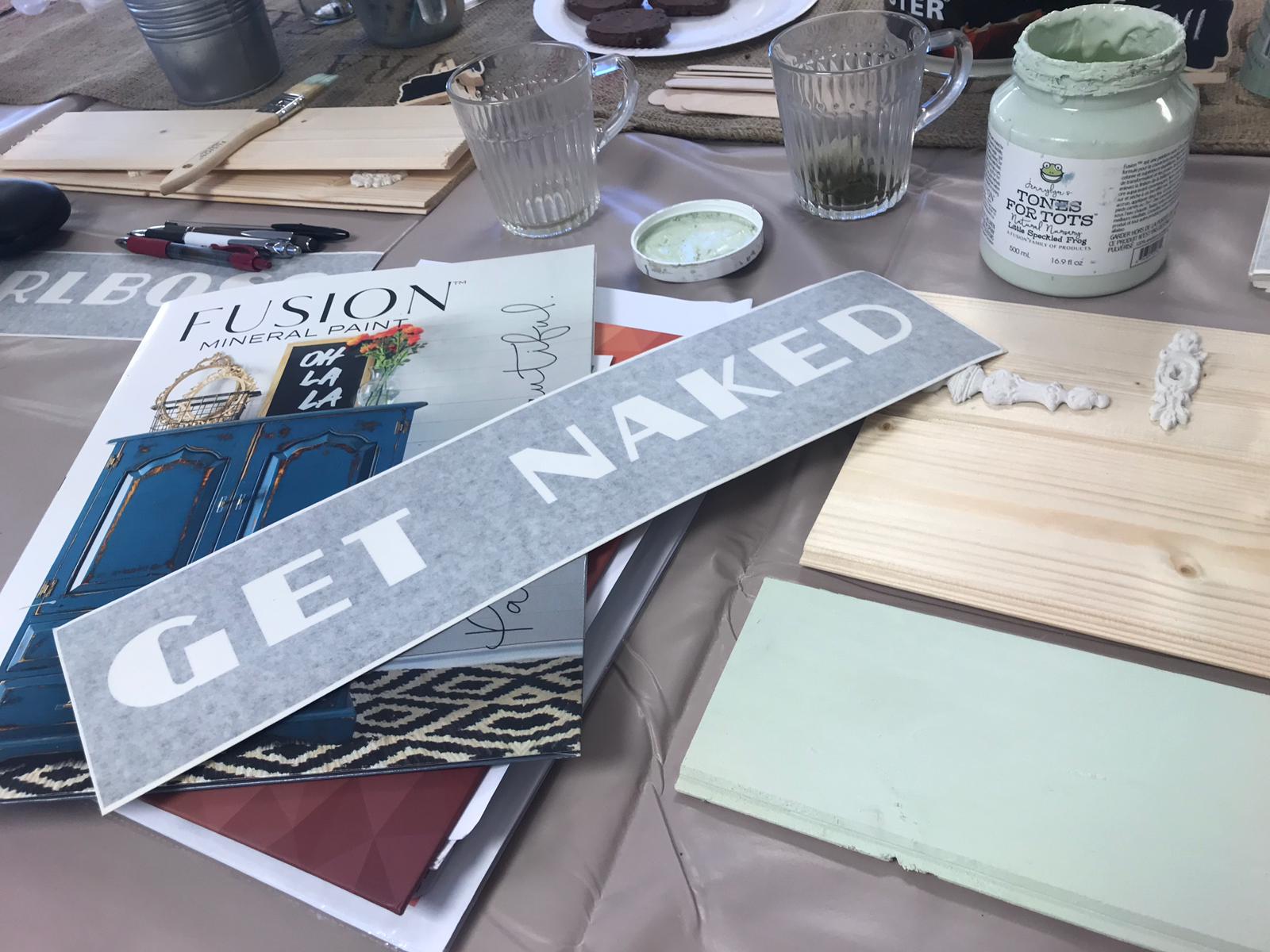If you’ve been keeping up with our blogs you’ll probably already be familiar with the reasons why online furniture painting workshops are the way forward for paint retailers. If not, you’ll want to click through here first to read all about that (we highly recommend it).
Hosting workshops online is logistically much simpler than the in-person alternative, but there is still a lot to consider. You might have some questions, such as…
Where will you find students?
How will they pay?
How do you deliver the classes?
It’s important to remember that there’s no need to make this process more difficult than it needs to be.
And through using Facebook groups, you’ll find that hosting online painting is actually much easier than you originally thought. It’s simple to use and has several great features for course creators, all on a platform that (mostly) everyone already has.
In this blog, we’re going to explore how and why paint retailers should use Facebook to host their online painting workshops. We’ll cover the process of setting this up and the benefits of using this platform.

How to use Facebook to hold online painting workshops
If you’ve never hosted online workshops before, you might be a little unsure of where to begin.
But, thanks to Facebook, it really is quite straightforward to set up.
To show you just how simple it is, we’ll run through the process of how to use Facebook to hold your online painting workshops.
1. Create your group
The first (and most important) step is to create a designated Facebook group.
Along with the menu tabs at the top of your Facebook browser, you’ll find a ‘create’ section.
From this drop-down menu, a number of different options will appear. This includes creating an event, a page, a listing on the Facebook marketplace, and several others.
The correct option for you here is ‘create group’.
2. Select group type and edit settings
Next, you can edit the settings to select which kind of group it is you’re creating.
Different group types have different features. For example, gaming groups, buy and sell groups, and workgroups will all have distinct characteristics.
For online painting workshops, you’ll want to select the option of a ‘social learning’ group. This gives you the option to organise posts into a unit or series of units that members can see.
When editing the group settings, you can change the page colour, and group name, and customise the group URL to make it easier to find.
There are a few points to remember when setting up here (doing these will make your life much easier).
Adding the ‘social learning units’ section allows you to set up your course content – this is very important to do.
Next, you can change the settings so that only group admins, i.e. you, can accept group members who have requested to join.
It also helps to set up questions which people need to answer before being accepted into the group.
These could be what’s your payment confirmation number/email address used when making your payment?
Or what is the group password?
The group password, for example, could be sent via email once a person has successfully signed up for the course of workshops.
This helps to keep the group secure. It also encourages members to check their emails and junk mail in order to not miss any future email communications.
As a tip, we’d recommend you allow access to group members to create posts. This can be arranged in settings. Having workshop participants post their questions and queries publicly in the group may be helpful for other members and spark interesting discussion.
And one last thing…
The group page’s cover image will be in public view, so it’s important to use something clear and enticing here. The image description can also include a link to more information and provide instructions to others on how to join.

3. Add course content
This is where it all comes together!
The units section is where you’ll create the sections for each workshop, relevant resources, and the all-important live class.
By making ‘units’ the default landing tab, members will arrive at this section first when they click onto the group.
It will be useful to create a ‘welcome’ unit offering instructions and extra info on how the classes will function. You can also share a list of materials and tools required and layout any ground rules.
Pinning this to be the first thing that new members see will help ease them into the experience if they’re unfamiliar with the process.
Whether your workshops comprise a module set over a number of weeks or a one-off, you’ll want to create distinct and separately labelled units for easy navigation.
Having one unit for each week of content is a good way to go about it.
Within each unit, you can link resources, add media, or even content quizzes. You can also add content from discussion posts into its corresponding section.
After each live workshop, a recording of the class can be uploaded to the discussion board and filed away to its designated unit so that people can easily revisit it.
4. Add group members
Once customers have successfully signed up, you can send them a confirmation via email with a link to the Facebook group.
Then, all you have to do is approve their request to join and you’re all set.
5. Get started
By this point in the process, you’re all ready to go.
Your students will have a hub of information, a discussion board, a course plan, and access to resources and recordings.
Now, for the actual workshops themselves, you have freedom in how you want to carry them out.
On the Facebook platform, you can hold live broadcast video calls with up to 50 people. Or, you may use your Facebook group to link to an alternative video conferencing platform such as Zoom or Teams.
As well as delivering the workshops, you can optionally use the group to build up a sense of community. Sharing links to articles, posting extra videos, prompting discussions, and asking students to share their creations are all ways to do this.
6. Ask for feedback
You can use Facebook to gain insight into how your workshops are running and make any necessary improvements.
For example, creating a poll in the Facebook group or posting a link to an anonymous survey to get feedback.
With permission, you can share positive evaluations and testimonials to help further promote your workshops online.
You could create a blog post out of these for your website, or even ask participants to take part in an interview for your blog about their furniture painting workshop journey.

Why you should use Facebook to host your online painting workshops?
So, why use Facebook specifically to host your online painting workshops?
First off – it’s free!
This is a hugely appealing factor for small businesses especially.
But aside from this, there are many other great benefits.
One is that Facebook is easy to navigate and user friendly. The majority of your customers will most likely already have an account and know their way around the site. If not, it’s very quick to sign up and get the hang of it.
You can advertise your workshops on your existing business page, which will be shared amongst an audience already aware of your products and services. Equally, you can promote further on Facebook and may even choose to go for a paid ad.
Creating and selling a ‘furniture painting workshop materials kit’ for customers to buy prior to the course beginning is a great additional business venture. Equipment, paints, brushes, cleaning products, and anything else required are all set together in one easy bundle. You could advertise these bundles on your business page as well as within the closed group in case people decide to purchase once they have joined.
You may opt to use Facebook Shop to keep all of the workshop operations in one place. This is a mobile-first shopping experience where businesses can easily create an online store for free.
By offering free online taster workshops via Facebook, you can give people a taster session and build trust this way. Potential customers can ask any questions they like to see if they will be a good fit.
Finally, as these workshops run via the internet, there are no geographical restrictions. The potential to join from anywhere means that you can target a much larger customer base. Plus, Facebook is already a global platform, so there are no concerns about logistics here.
Should you use Facebook for your online paint workshops?
Now, there are two sides to every story, and inevitably (with any platform you use) there will be some cons…
Facebook is a huge corporation and they have the power to make changes at any time. It is free for now and most likely will stay that way. But still, this is out of your control.
Plus, some people might not want to create a Facebook account and have no alternative way to access the workshops.
However, we would argue that the pros win this time.
Facebook offers great features. It’s easy to set up and use as both a moderator and group member. The workshop content is all kept in one place, hassle-free, where students can access resources and recordings at any time.
The option to upgrade to a different platform at a later date is always there. But a Facebook social learning group is the best choice, especially as a starting point.
For more painting and marketing advice, sign up for our Painpreneur email. We’ll share regular hints and tips on refinishing as well as marketing and business.
???????? Related content: 41 Evergreen Social Media Ideas To Post For Your Paint Business
Conquer YOUR DIGITAL MARKETING AND SUBSCRIBE TO THE PAINTPRENEUR® WEEKLY DROP
Stay connected with the latest trends, inspiration, and expert insights in the decorative furniture paint industry. Our weekly emails are packed with valuable content designed to empower and support your Paintpreneur® journey. It’s more than an email—it’s your secret weapon in the furniture paint industry!







